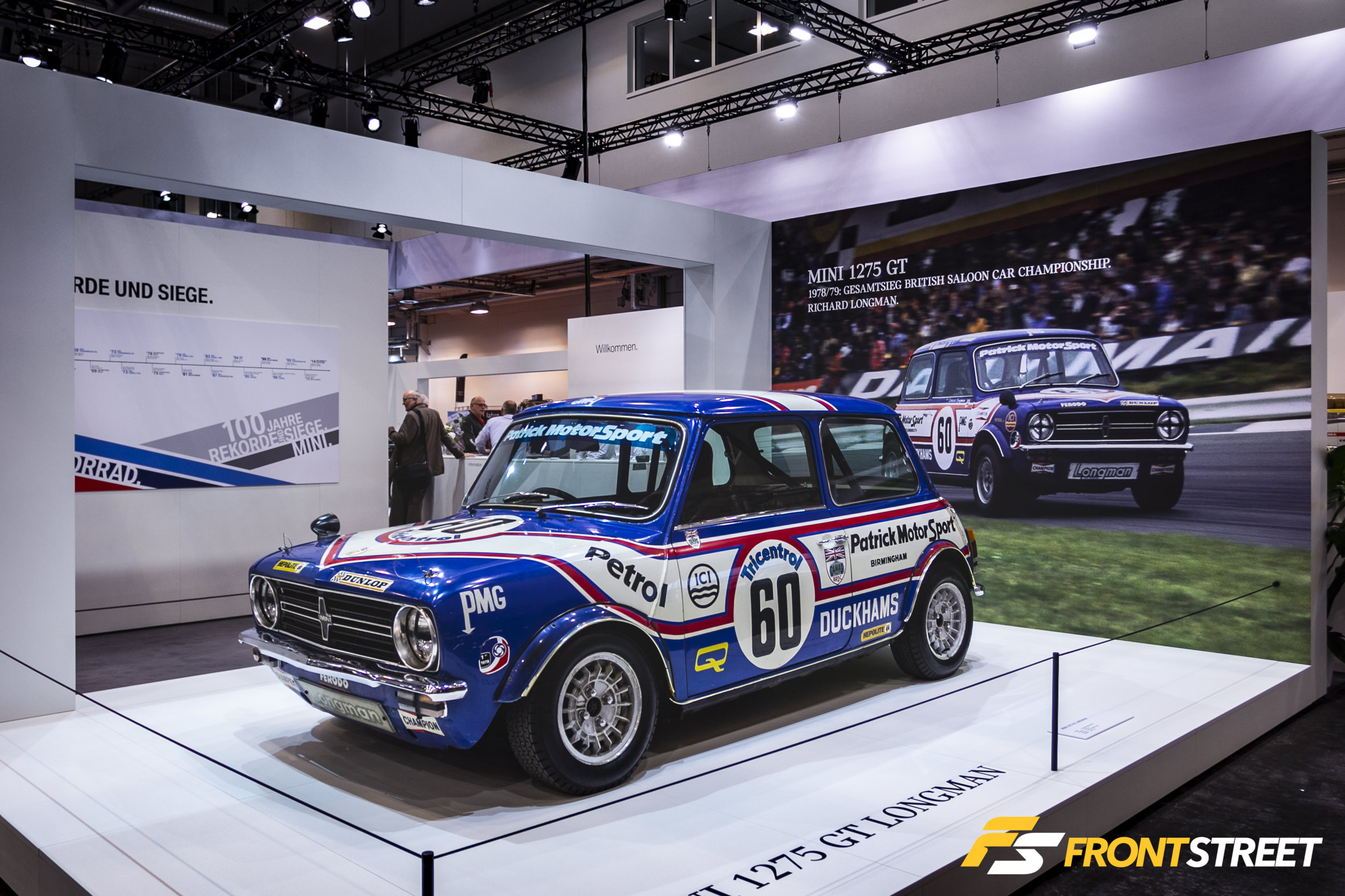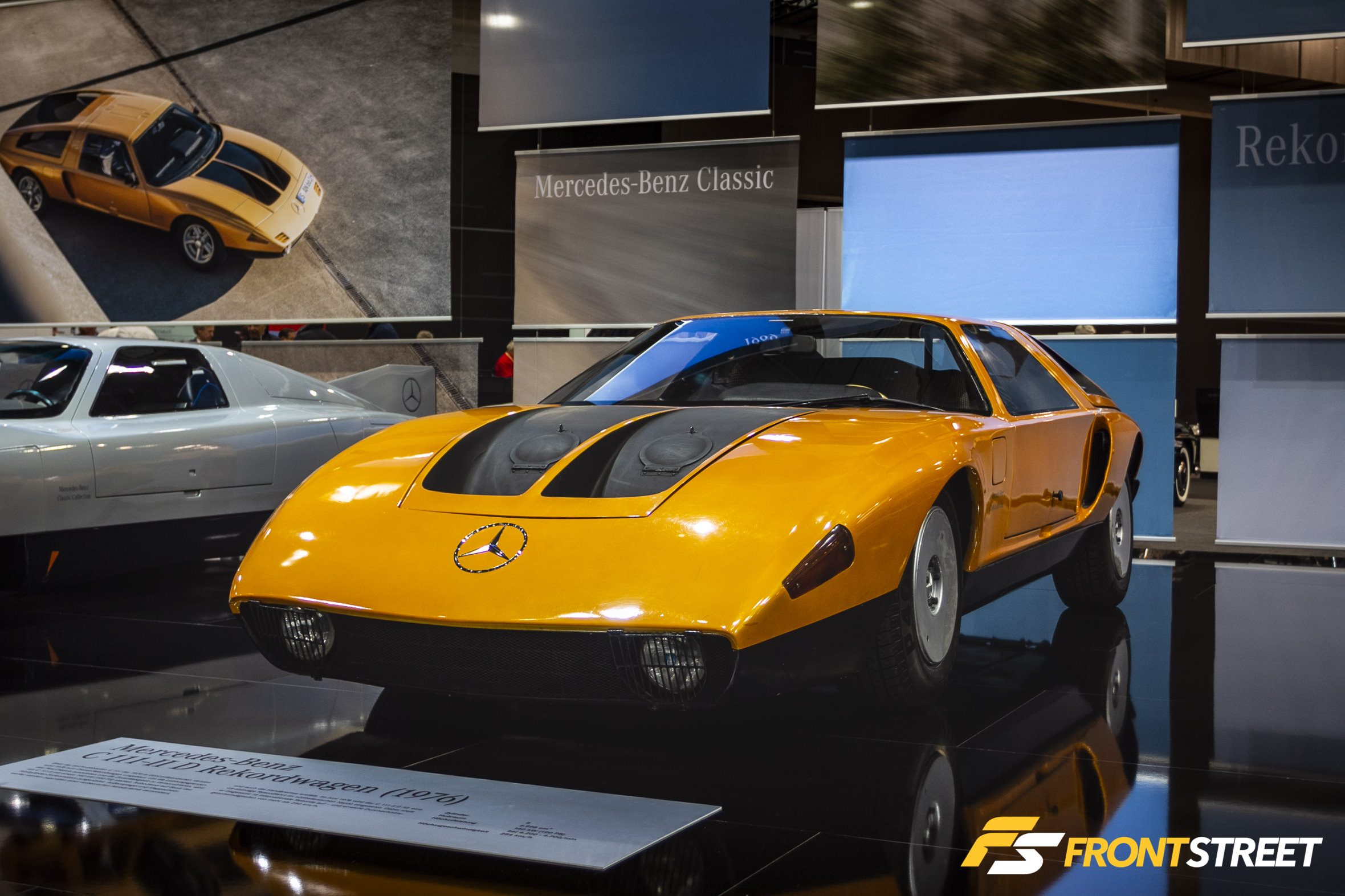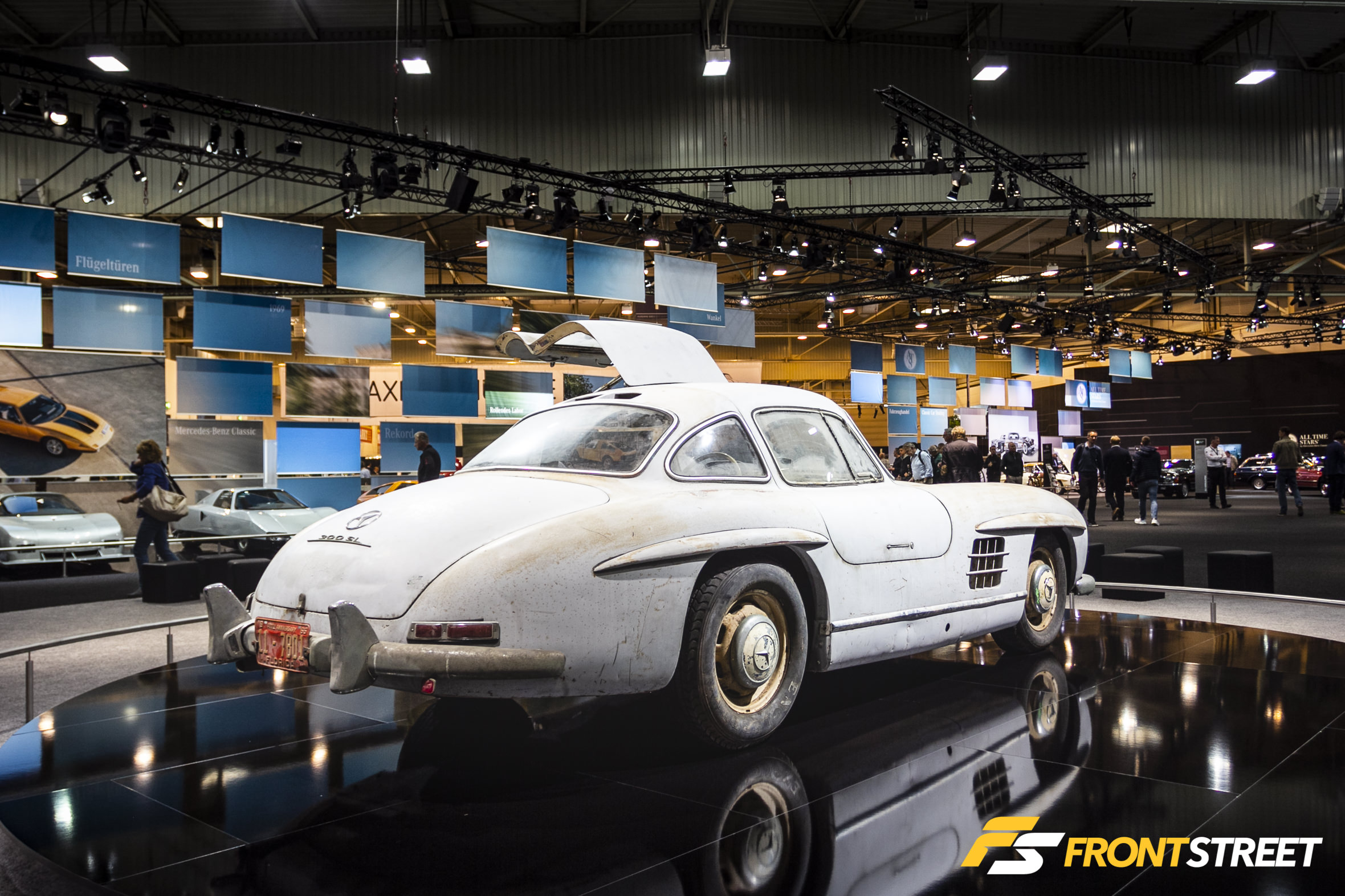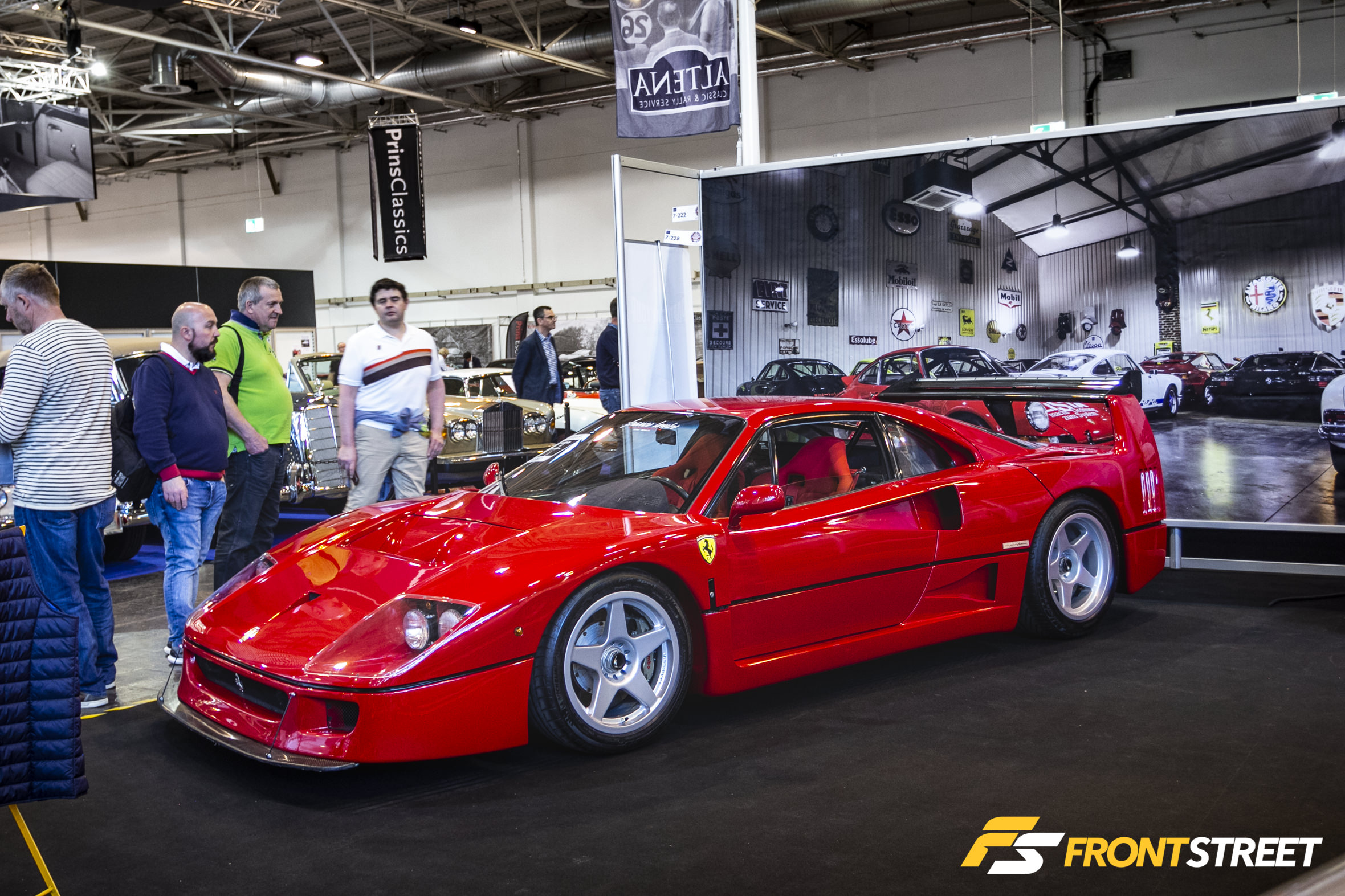Photography and vehicle notes by Jeroen Willemsen
As the transition to fully electric vehicles looms and embeds itself further into our lives, there is an entire world of automotive enthusiasts who aren’t ready to move on just yet. Despite the current crossover to battery-powered sports cars, vintage vehicle restoration is still a budding enterprise. Nowhere celebrates this rich fascination with restoring vintage treasures quite like Techno-Classica in Essen, and this 31st iteration of the event was no different.



Squeezing over 190,000 visitors from 46 different nations into the Messe Essen located in Germany, Techno-Classica is a four-day global fair meant to ensure the preservation of automobile cultural heritage. Our European correspondent Jeroen Willemsen was on location to bring us all of the glory, but found some drawbacks right out of the gate.



“This year was a bit different, at least it felt a bit different,” says Willemsen. “There were less manufacturers. Bugatti, Lamborghini, and Rolls Royce were absent, and BMW only brought two cars from their museum instead of multiple racecars like last year. They did have a few members of the various BMW clubs from Germany, but it was not the same as last year when they had at least 20 cars from their vault on display.”
With over 2,700 vehicles on site, it can be more than tricky to see it all. We saved you some time and narrowed down our five most noteworthy pieces of the immense spectacle of restoration. Enjoy!
Mercedes-Benz’ Setup In Hall 1


Mercedes-Benz assembled a special presentation that included some record-breaking cars and prototypes from its C111 range, which it refers to as “experimental vehicle, super sports car, and style icon.” While the original mid-engined Designstudie SLX from 1966 might have started it all, nothing from this display drew attention quite like the bright orange hue, wedge shape, and futuristic look of the other various C111 models.




In 1969, the company released the C111 prototype with a 1.8-liter three-rotor Wankel engine and 280 horsepower. Shortly after its release, the development continued as the company unveiled the C111-II in 1970, now with a 2.4-liter four-rotor Wankel! Six copies were built for testing, but the car was never produced, despite hefty demand.
Years later in 1976, one of the six test mules was transplanted with a five-cylinder diesel engine and named the C111-IID. In Nardo, Italy the IID was used to break 16 speed and distance records.

This birthed the barely recognizable C111-IV Rekordwagen in 1979, which was created with the sole purpose of breaking more records. The car received a twin-turbocharged 4.8-liter V8 lump out of the SL, and shot around the same Italian track at 404 km/h, which put it into the record books once again.




Moving away from the C111 exhibit, Mercedes had more goodies on display with this interestingly rugged 300SL Gullwing (W198). According to Willemsen, “This particular 300SL has build/order number 00043 and was finished on 28th of October in 1954.”
“It was then shipped to Mercedes-Benz USA on the 16th of November in that same year. The first owner from Jacksonville, Florida took delivery of the car not long after that. The owner was a famous collector with a penchant for European sports cars. He used this car as his daily and he also raced at local race events, eventually selling the car. The third known owner decided that they wanted to repaint the car in the early sixties. After disassembly and the removal of the paint the project got stuck. It was parked in a Florida garage and forgotten, who does that? In 2018, the car was rediscovered by Mercedes-Benz Classic and was reassembled just for this show’s display. I’m not sure if it will do the rounds at various events or if they will start restoration after this event?”
DP Motorsport Porsches


One of our favorites from this event, and a crowd favorite as well, DP Motorsport’s display combined restoration with motorsports for a perfect mixture. On one side, was their Widebody Sleeper, a project based on a 1983 911 that hides a combination of carbon fiber and Kevlar widebody arches under a fresh coat of paint. The team at DP are experts of making a Porsche chassis as lightweight as possible, and the addition of composite materials helps that become reality.





Willemsen’s favorite of the event: this is a DP Motorsport customer car, based on the 911’s Werks Turbo Look, but without the turbochargers. It instead uses a 3.6-liter engine generating 300 ps in front of the five-speed transmission. H&R Springs suspension couples with seemingly the same wheel and beefy Pirelli tire package as Rob Ida’s 930 we featured a couple years ago to complete this super sleek, black motorsport package.
All Of The Ferrari F40s



It’s not a regular occurrence to witness a Ferrari F40 in real life, let alone to see multiple examples under the same roof, but Techo-Classica provides just that. Any Tifosi in the building had their choice of examining one of the red street examples floating around the grounds, one of which was formerly owned by 1992 Formula One World Champion, former Ferrari driver, and British racing legend Nigel Mansell.


But I think Gallery Aaldering in Brummen brought out the heat with this beautiful 1993 Ferrari F40 LM-spec racecar. It was produced to race from its inception, and was done so from the start. This particular example has performed quite well in the Ferrari-Porsche Challenge, was previously driven by a few famous names, and exploited that heritage with a price tag of €999,500 (about $1.1M in USD) at Techno-Classica. Not a bad price considering how iconic this car is, and what the road-going examples fetch.
Porsche Classic Restoration


Porsche is doing it right. The company not only plays off its heritage when designing new vehicles, but also offers an entire catalog of off-the-shelf pieces to aid its classic owners, too. Porsche Classic is a full-range parts department designed to service any older Porsche model.
“Need new shocks? No problem. Same goes for the brakes. You can call your local Porsche Classic dealer and give them the part number you need, they’ll order it for you through the extensive Porsche network, and the parts will be delivered to your doorstep,” says Willemsen.



“A look behind the process of restoring a vehicle most would consider lost. When all body panels and paint is removed in a chemical bath you are presented with a blank canvas, as you will. The body is then placed on a straightening bench, frame gauges specially designed for doors and windows are used to precisely measure the chassis. To enable perfect and accurate body framing, the engineers use the original body gauges from the former production process. Where necessary, mechanics bend deformed areas back into shape and any areas badly damaged by corrosion are cut out of the body and replaced with new genuine parts. Any body parts that are currently no longer available are manufactured by hand in line with the original Porsche drawings.”


That’s not all, though. Even the Porsche Classic oils are provided in differing viscosities for different generations of Porsche, no matter the year. If only other companies took after this business model instead of discontinuing the support for older models.
RM Sotheby’s Auction Cars


How could we not include the collection of cars being auctioned by RM Sotheby’s? This section had everything for a lover of pristine vintage automobiles, including a few older Mercedes-Benz such as this 1979 500 TE AMG wagon, or this 1990 560 SEC AMG 6.0!





Elsewhere in the auction, there were BMWs, Porsches, a RUF, and this exquisite 1985 Lancia Delta S4 Stradale, which sold for €1.04M (roughly $1.16M) at Techno-Classica.
All of this material hardly scratches the surface of the incredible depth of this event, though. So take a look through our gallery below, and next time you’re feeling down on the transition from gasoline to battery power, just remember Techno-Classica is keeping the vintage vibe alive!






















































































